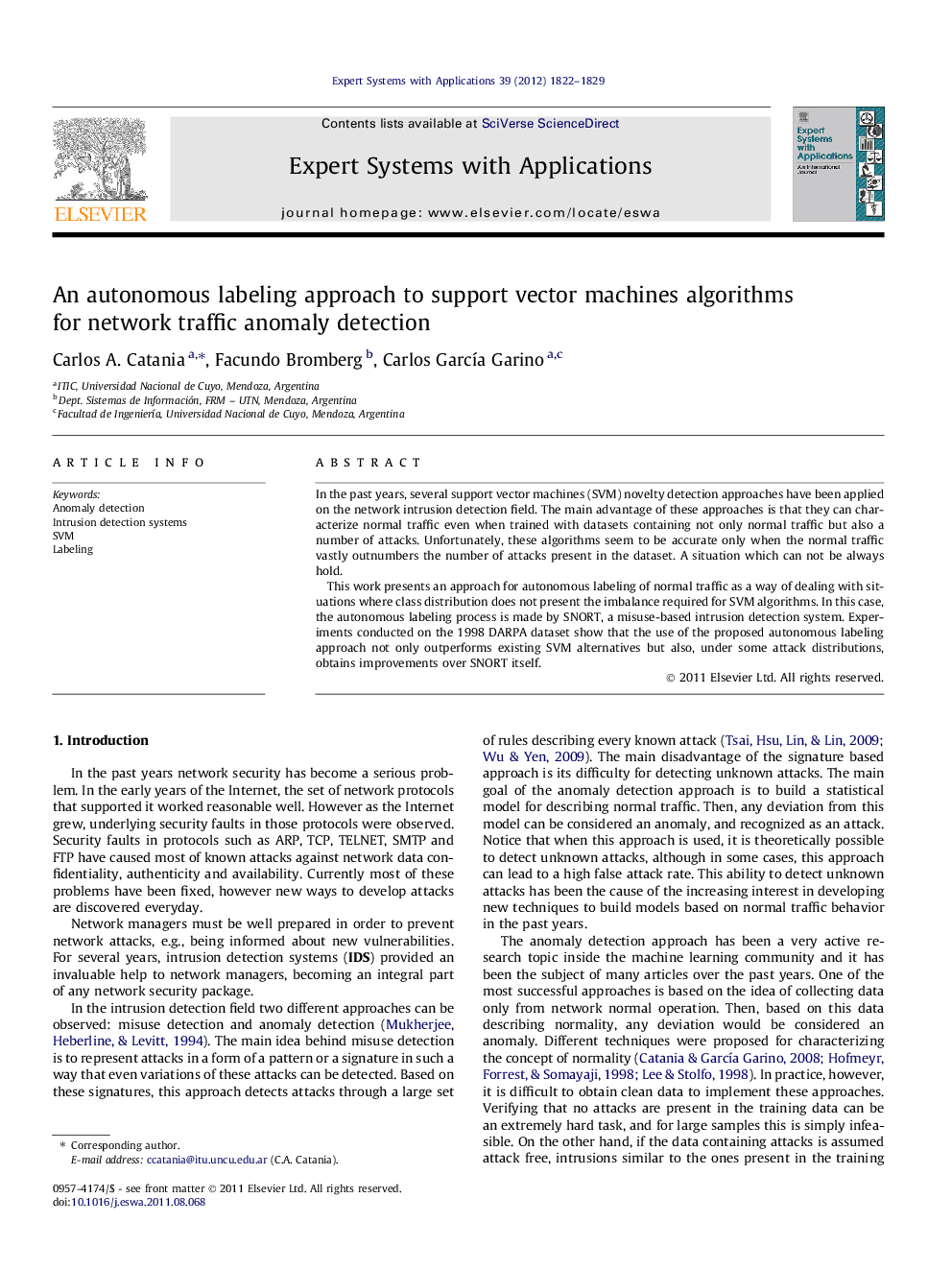| Article ID | Journal | Published Year | Pages | File Type |
|---|---|---|---|---|
| 388081 | Expert Systems with Applications | 2012 | 8 Pages |
In the past years, several support vector machines (SVM) novelty detection approaches have been applied on the network intrusion detection field. The main advantage of these approaches is that they can characterize normal traffic even when trained with datasets containing not only normal traffic but also a number of attacks. Unfortunately, these algorithms seem to be accurate only when the normal traffic vastly outnumbers the number of attacks present in the dataset. A situation which can not be always hold.This work presents an approach for autonomous labeling of normal traffic as a way of dealing with situations where class distribution does not present the imbalance required for SVM algorithms. In this case, the autonomous labeling process is made by SNORT, a misuse-based intrusion detection system. Experiments conducted on the 1998 DARPA dataset show that the use of the proposed autonomous labeling approach not only outperforms existing SVM alternatives but also, under some attack distributions, obtains improvements over SNORT itself.
► SVM for novelty detection works on datasets with a low proportion of attacks. ► In real traffic situations the required imbalance is not always possible to guarantee. ► Using SNORT as an autonomous labeling tool helps reducing the presence of attacks. ► SVM for novelty detection become more robust along different attack distributions.
